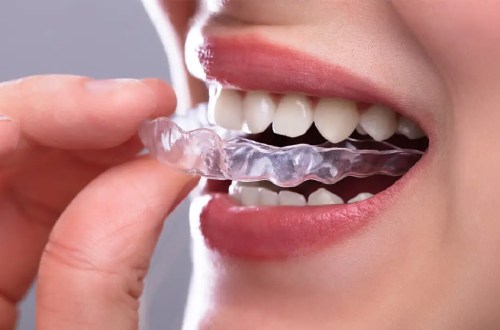Primary teeth, also known as baby teeth, play a vital role in your child’s oral development. The eruption of primary teeth typically begins around six months old and continues until the child is about three years old. Understanding the sequence of primary teeth eruption is essential for parents and caregivers to ensure proper oral care and identify any potential issues early on. To know more about primary teeth eruption sequence and importance, read this article curated by family dentistry Oshawa Oshawa dentist.
Exploring the primary teeth eruption sequence
Lower front teeth (central incisors)
– Erupt between 6-12 months old
– These are usually the first teeth to erupt
– Help with biting and chewing food
Upper front teeth (central incisors)
– Erupt between 8-12 months old
– Follow the eruption of the lower front teeth
– Help with biting and chewing food
Lower molars
– Erupt between 12-16 months old
– Help with grinding and crushing food
– Important for proper chewing and digestion
Upper molars
– Erupt between 16-20 months old
– Follow the eruption of the lower molars
– Help with grinding and crushing food
Canines (cuspid teeth)
– Erupt between 16-22 months old
– Help with tearing and piercing food
– Important for proper chewing and digestion
Second molars
– Erupt between 22-28 months old
– Help with grinding and crushing food
– Complete the primary dentition
Unwinding the importance of primary teeth
Primary teeth, also known as baby teeth, play a crucial role in a child’s oral development and overall health. Here are some reasons why primary teeth are important:
- Chewing and digestion: Primary teeth help children chew and digest food properly, ensuring they receive essential nutrients.
- Speech development: Primary teeth aid in speech development by helping children form words and sounds correctly.
- Guiding permanent teeth: Primary teeth guide permanent teeth into their correct positions, ensuring proper alignment and spacing.
- Boosting self-confidence: A healthy, full set of primary teeth can enhance a child’s self-confidence and self-esteem.
- Preventing orthodontic issues: Properly aligned primary teeth can help prevent orthodontic issues later in life.
- Supporting jaw development: Primary teeth help shape the jaw and support its development.
- Aiding in nutrient absorption: Chewing food properly with primary teeth ensures nutrients are absorbed effectively.
- Helping with good oral hygiene habits: Primary teeth teach children the importance of oral hygiene and help establish good habits.
- Supporting overall health: Research links oral health to overall health, making primary teeth crucial for a child’s well-being.
- Enhancing smile and facial aesthetics: A healthy, full set of primary teeth contributes to a beautiful smile and facial aesthetics.
Common issues affecting primary teeth
Here are some common issues that can affect primary teeth:
- Tooth decay: Cavities and tooth decay can occur in primary teeth, especially if good oral hygiene habits are not practiced.
- Early loss: Primary teeth can be lost too early due to decay, injury, or other factors, leading to spacing issues and potential orthodontic problems.
- Misalignment: Primary teeth can become misaligned, causing issues with biting and chewing.
- Gingivitis: Inflammation of the gums can occur in primary teeth, leading to redness, swelling, and bleeding.
- Hypoplasia: Teeth can be underdeveloped or discolored due to various factors, such as nutritional deficiencies or genetics.
- Sensitivity: Primary teeth can be sensitive to temperature changes or sweet treats.
- Grinding and clenching: Children can grind or clench their teeth, leading to wear and tear.
- Trauma: Injuries can cause chips, cracks, or breaks in primary teeth.
- Eruption issues: Teeth can erupt too early or too late, causing spacing issues.
- Gum recession: Gums can recede, exposing roots and increasing the risk of decay.
- Discoloration: Teeth can become discolored due to various factors, such as medication or fluoride exposure.
- Overcrowding: Primary teeth can become overcrowded, leading to alignment issues.
Understanding the sequence of primary teeth eruption is crucial for ensuring proper oral care and identifying potential issues early on. By knowing what to expect, parents and caregivers can provide the necessary support and guidance for healthy oral development. Remember, primary teeth are essential for a child’s overall health and well-being, so monitor their progress and consult a pediatric dentist if you have any concerns.






